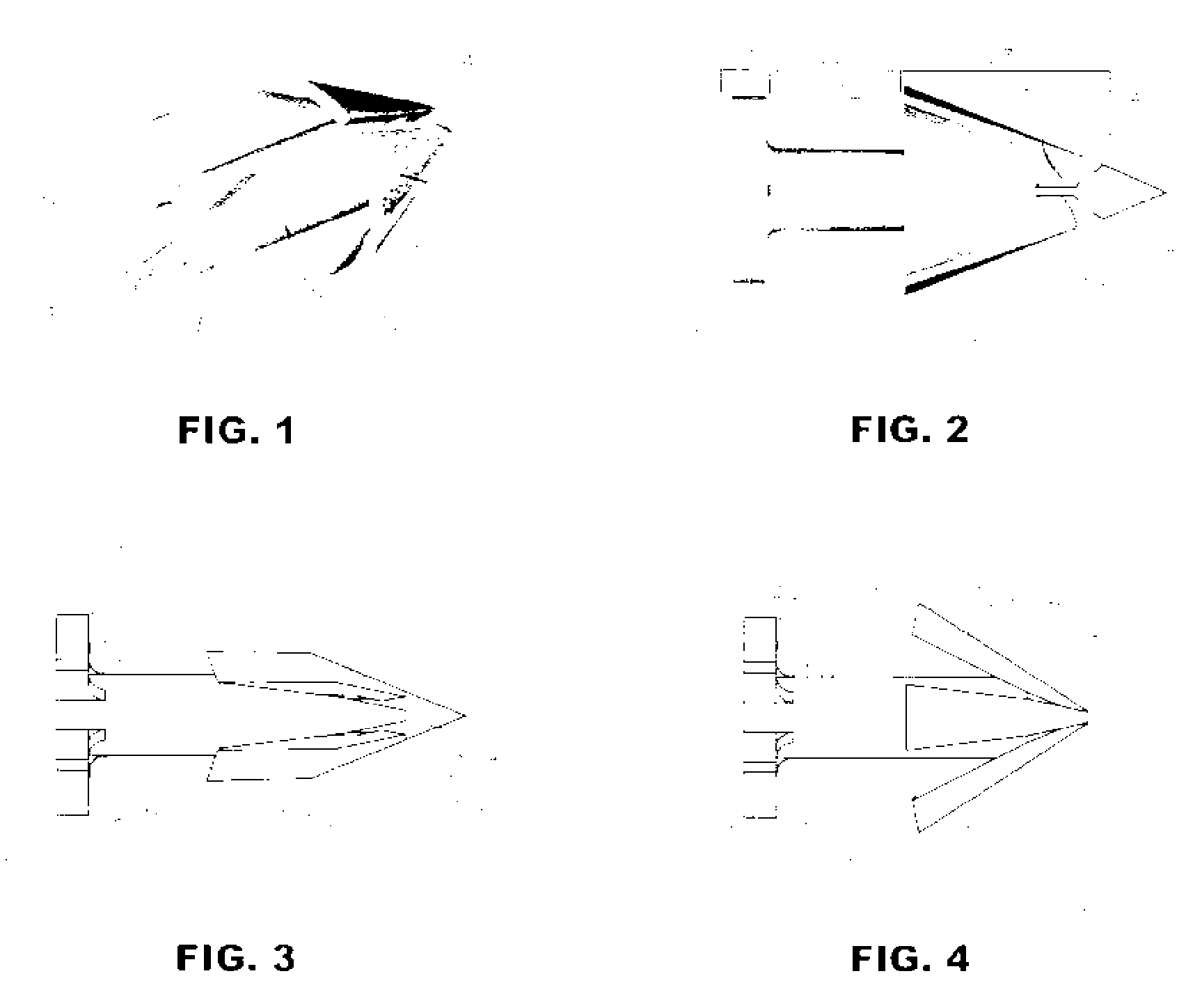Absorbable Anchor for Hernia Mesh Fixation
a technology of anchors and hernia meshes, applied in the field of surgical fasteners, can solve the problems of large quantity of metal remaining in the body as permanent implants, mesh attachment, and failure to teach how to generate enough spring action from the device to overcome the high radial force generated by tissue, and achieve the effect of reducing the effects of high ambient shipping temperatures and humidity
- Summary
- Abstract
- Description
- Claims
- Application Information
AI Technical Summary
Benefits of technology
Problems solved by technology
Method used
Image
Examples
Embodiment Construction
[0044] Turning now to FIGS. 1 through FIG. 4, depictions of the anchor of the current invention, generally designated as 10. Anchor 10 comprises three sections, head section 21, mesh-tissue section 22, and tissue snaring section 23. Head section 21 comprises six spokes 11 attached to hub 16. Through-hole 24 is formed parallel with the longitudinal axis of anchor 10. Distal features (not shown) described in U.S. patent application Ser. No. 10 / 709,297, within through hole 24, serve to restrain anchor 10 distally when anchor 10 comes into contact with tissue penetrator 18 of the delivery device. Head section 21 can alternately be a solid or slotted disk but the spoke arrangement as shown in FIG. 1 aids in injection molding anchor 10 without the need for movable slides in the mold. In either configuration the head section 21 acts to restrain mesh 25 against tissue 26. Mesh-tissue section 12 is generally cylindrical shaped with a dimension transverse to its longitudinal axis that is smal...
PUM
 Login to View More
Login to View More Abstract
Description
Claims
Application Information
 Login to View More
Login to View More - R&D
- Intellectual Property
- Life Sciences
- Materials
- Tech Scout
- Unparalleled Data Quality
- Higher Quality Content
- 60% Fewer Hallucinations
Browse by: Latest US Patents, China's latest patents, Technical Efficacy Thesaurus, Application Domain, Technology Topic, Popular Technical Reports.
© 2025 PatSnap. All rights reserved.Legal|Privacy policy|Modern Slavery Act Transparency Statement|Sitemap|About US| Contact US: help@patsnap.com


